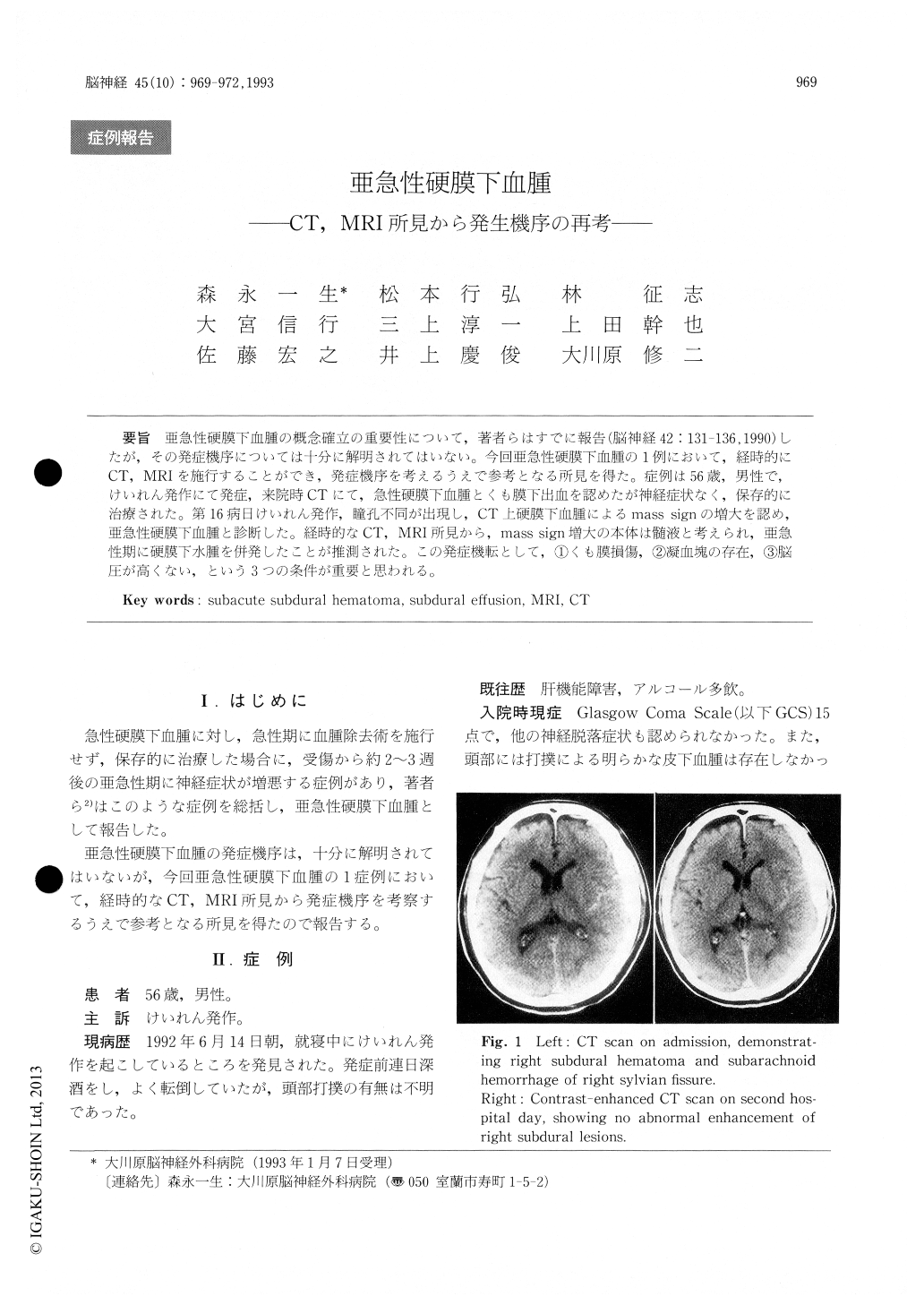Japanese
English
- 有料閲覧
- Abstract 文献概要
- 1ページ目 Look Inside
亜急性硬膜下血腫の概念確立の重要性について,著者らはすでに報告(脳神経42:131-136, 1990)したが,その発症機序については十分に解明されてはいない。今回亜急性硬膜下血腫の1例において,経時的にCT, MRIを施行することができ,発症機序を考えるうえで参考となる所見を得た。症例は56歳,男性で,けいれん発作にて発症,来院時CTにて,急性硬膜下血腫とくも膜下出血を認めたが神経症状なく,保存的に治療された。第16病日けいれん発作,瞳孔不同が出現し,CT上硬膜.下血腫によるmass signの増大を認め,亜急性硬膜下血腫と診断した。経時的なCT, MRI所見から,mass sign増大の本体は髄液と考えられ,亜急性期に硬膜下水腫を併発したことが推測された。この発症機転として,①くも膜損傷,②凝血塊の存在,③脳圧が高くない,という3つの条件が重要と思われる。
We have already reported about the importance of establishing the concept of subacute subdural hematoma. But the mechanism by which this dis-ease develops has not as yet been elucidated fully.
In one case of subacute subdural hematoma, we were able to perform CT and MRI over time and obtained findings which were of use in studying the mechanism of development.
The case was a 56-year-old male. He developed with seizure. CT on admission revealed acute sub-dural hematoma and subarachnoid hemorrhage. But neurological deficits were absent. So he was treated conservatively. On the 16th hospital day there appeared seizure, anisocoria and an increase in the mass sign due to subdural hematoma was noted on CT, so a diagnosis of subacute subdural hematoma was made. Cerebrospinal fluid was considered accountable for the increase in the mass sign judg-ing from the findings of CT and MRI each perfor-med over time. It was surmised that subdural effusion developed concurrently in the subacute stage.
Three conditions, namely, presence of (1) arach-noid tear, (2) clots, (3) no intracranial hypertension are considered important as the mechanism by which subacute subdural hematoma develops.

Copyright © 1993, Igaku-Shoin Ltd. All rights reserved.


